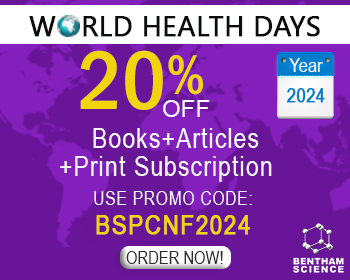Abstract
The success rate to achieve clinical approval of drugs developed to treat diseases of the central nervous system (CNS) is the lowest of all disease indications. A large contributor to this poor success rate is failure of small molecules to pass through the blood-brain barrier (BBB), a barrier composed of capillary endothelial cells connected by tight junctions that functions to extrude xenobiotics from the brain. Designing small molecules to be BBB penetrant has been the subject of intensive research and has resulted in a series of guidelines to attain the best possible chances of BBB penetration. This review will analyze the current state of thinking in ranking the importance of various physicochemical properties required to select BBB penetrant molecules, describe model systems to determine BBB penetration, summarize data analysis methods and provide an outlook on further developments in the field.
Keywords: Blood-brain barrier, Drug-likeness, Central Nervous System, Neuropharmacology, Physicochemical Properties, Drug Design.
Current Medicinal Chemistry
Title:Selecting Good ‘Drug-Like’ Properties to Optimize Small Molecule Blood-Brain Barrier Penetration
Volume: 23 Issue: 14
Author(s): Paul C. Trippier
Affiliation:
Keywords: Blood-brain barrier, Drug-likeness, Central Nervous System, Neuropharmacology, Physicochemical Properties, Drug Design.
Abstract: The success rate to achieve clinical approval of drugs developed to treat diseases of the central nervous system (CNS) is the lowest of all disease indications. A large contributor to this poor success rate is failure of small molecules to pass through the blood-brain barrier (BBB), a barrier composed of capillary endothelial cells connected by tight junctions that functions to extrude xenobiotics from the brain. Designing small molecules to be BBB penetrant has been the subject of intensive research and has resulted in a series of guidelines to attain the best possible chances of BBB penetration. This review will analyze the current state of thinking in ranking the importance of various physicochemical properties required to select BBB penetrant molecules, describe model systems to determine BBB penetration, summarize data analysis methods and provide an outlook on further developments in the field.
Export Options
About this article
Cite this article as:
C. Trippier Paul, Selecting Good ‘Drug-Like’ Properties to Optimize Small Molecule Blood-Brain Barrier Penetration, Current Medicinal Chemistry 2016; 23 (14) . https://dx.doi.org/10.2174/0929867323666160405112353
| DOI https://dx.doi.org/10.2174/0929867323666160405112353 |
Print ISSN 0929-8673 |
| Publisher Name Bentham Science Publisher |
Online ISSN 1875-533X |
Call for Papers in Thematic Issues
Advances in Medicinal Chemistry: From Cancer to Chronic Diseases.
The broad spectrum of the issue will provide a comprehensive overview of emerging trends, novel therapeutic interventions, and translational insights that impact modern medicine. The primary focus will be diseases of global concern, including cancer, chronic pain, metabolic disorders, and autoimmune conditions, providing a broad overview of the advancements in ...read more
Cellular and Molecular Mechanisms of Non-Infectious Inflammatory Diseases: Focus on Clinical Implications
The Special Issue covers the results of the studies on cellular and molecular mechanisms of non-infectious inflammatory diseases, in particular, autoimmune rheumatic diseases, atherosclerotic cardiovascular disease and other age-related disorders such as type II diabetes, cancer, neurodegenerative disorders, etc. Review and research articles as well as methodology papers that summarize ...read more
Chalcogen-modified nucleic acid analogues
Chalcogen-modified nucleosides, nucleotides and oligonucleotides have been of great interest to scientific research for many years. The replacement of oxygen in the nucleobase, sugar or phosphate backbone by chalcogen atoms (sulfur, selenium, tellurium) gives these biomolecules unique properties resulting from their altered physical and chemical properties. The continuing interest in ...read more
Current advances in inherited cardiomyopathy
Describe in detail all novel advances in multimodality imaging related to inherited cardiomyopathy diagnosis and prognosis. Shed light to deeper phenotypic characterization. Acknowledge recent advances in genetics, genomics and precision medicineread more
 194
194 19
19 4
4 1
1
- Author Guidelines
- Graphical Abstracts
- Fabricating and Stating False Information
- Research Misconduct
- Post Publication Discussions and Corrections
- Publishing Ethics and Rectitude
- Increase Visibility of Your Article
- Archiving Policies
- Peer Review Workflow
- Order Your Article Before Print
- Promote Your Article
- Manuscript Transfer Facility
- Editorial Policies
- Allegations from Whistleblowers
- Announcements
Related Articles
-
Recent Patents on Drugs Addressing Neurodegenerative Diseases
Recent Patents on Biomarkers RhoGEFs in Cell Motility: Novel Links Between Rgnef and Focal Adhesion Kinase
Current Molecular Medicine Synopsis on Managment Strategies for Neurodegenerative Disorders: Challenges from Bench to Bedside in Successful Drug Discovery and Development
Current Topics in Medicinal Chemistry Microglial Activation and its Implications in the Brain Diseases
Current Medicinal Chemistry Current Nervous System Related Drug Targets for the Treatment of Amyotrophic Lateral Sclerosis
Current Pharmaceutical Design Role of Mitochondrial Heat-shock Proteins and Immunophilins in Neuro Degenerative Diseases
Current Drug Targets Blockers of Voltage-Gated Sodium Channels for the Treatment of Central Nervous System Diseases
Recent Patents on CNS Drug Discovery (Discontinued) Monoamine Oxidase Inhibitors as Neuroprotective Agents in Age-Dependent Neurodegenerative Disorders
Current Pharmaceutical Design Drug Repositioning for Treatment of Movement Disorders: From Serendipity to Rational Discovery Strategies
Current Topics in Medicinal Chemistry Is VEGF a Key Target of Cotinine and Other Potential Therapies Against Alzheimer Disease?
Current Alzheimer Research Computer Aided Drug Design Studies in the Discovery of Secondary Metabolites Targeted Against Age-Related Neurodegenerative Diseases
Current Topics in Medicinal Chemistry Antiinflammatory Activity of Melatonin in Central Nervous System
Current Neuropharmacology Integrating Qualitative and Quantitative Tools for the Detection and Identification of Lectins in Major Human Diseases
Protein & Peptide Letters Anti-IL-1 β Therapies
Recent Patents on DNA & Gene Sequences Poly(ADP-Ribose)Polymerase 1 (PARP-1) Activation and Ca<sup>2+</sup> Permeable α-Amino-3-Hydroxy-5-Methyl-4-Isoxazolepropionic Acid (AMPA) Channels in Post-Ischemic Brain Damage: New Therapeutic Opportunities?
CNS & Neurological Disorders - Drug Targets Glitazones, PPAR-γ and Neuroprotection
Mini-Reviews in Medicinal Chemistry The Role of the Oxysterol/EBI2 Pathway in the Immune and Central Nervous Systems
Current Drug Targets Cholinotrophic Molecular Substrates of Mild Cognitive Impairment in the Elderly
Current Alzheimer Research Autophagy Modulators and Neuroinflammation
Current Medicinal Chemistry Machine Learning Approaches in Parkinson’s Disease
Current Medicinal Chemistry























